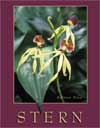1. A group of cells performing a common function is called a tissue. 2. Apical meristems are found in the vicinity of the tips of roots and
stems; the vascular cambium and the cork cambium occur as lengthwise cylinders
within roots and stems; intercalary meristems occur in the vicinity of nodes
of grasses and related plants. 3. Tissues produced by meristems consist of one to several kinds of
cells. They include parenchyma, collenchyma, sclerenchyma, epidermis, xylem,
phloem, periderm, and secretory tissues. 4. Parenchyma cells are thin-walled, while collenchyma cells have unevenly
thickened walls that provide flexible support for various plant organs. 5. Two types of sclerenchyma occur--fibers (which are long and tapering)
and sclereids (which are short in length); both types have thick walls and are
usually dead at maturity. 6. Complex tissues have more than one kind of cell. The principal types
are xylem, phloem, epidermis, and periderm. 7. Xylem conducts water and minerals throughout the plant. It consists
of a combination of parenchyma, fibers, vessels (tubular channels), tracheids
(cells with tapering end walls that overlap), and ray cells (involved in lateral
conduction). 8. Phloem conducts primarily dissolved sugars throughout the plant.
It is composed of sieve tubes (made up of cells called sieve tube members),
companion cells (which apparently regulate adjacent sieve tube members), parenchyma,
ray cells, and fibers. Callose aids in plugging injured sieve tubes. Sieve cells,
which have overlapping end walls, and adjacent albuminous cells take the place
of sieve tube members and companion cells in ferns and cone-bearing trees. 9. The epidermis is usually one cell thick, with fatty cutin (forming
the cuticle) within and on the surface of the outer walls. The epidermis may
include guard cells that border pores called stomata; root hairs, which are
tubular extensions of single cells; other hairs that consist of one to several
cells; and glands that secrete protective substances. 10. Periderm, which consists of cork cells and loosely arranged groups
of cells comprising lenticels involved in gas exchange, constitutes the outer
bark of woody plants. 11. Secretory tissues occur in various places in plants; they secrete
substances such as nectar, oils, mucilage, latex, and resins. | 


 2003 McGraw-Hill Higher Education
2003 McGraw-Hill Higher Education

 2003 McGraw-Hill Higher Education
2003 McGraw-Hill Higher Education